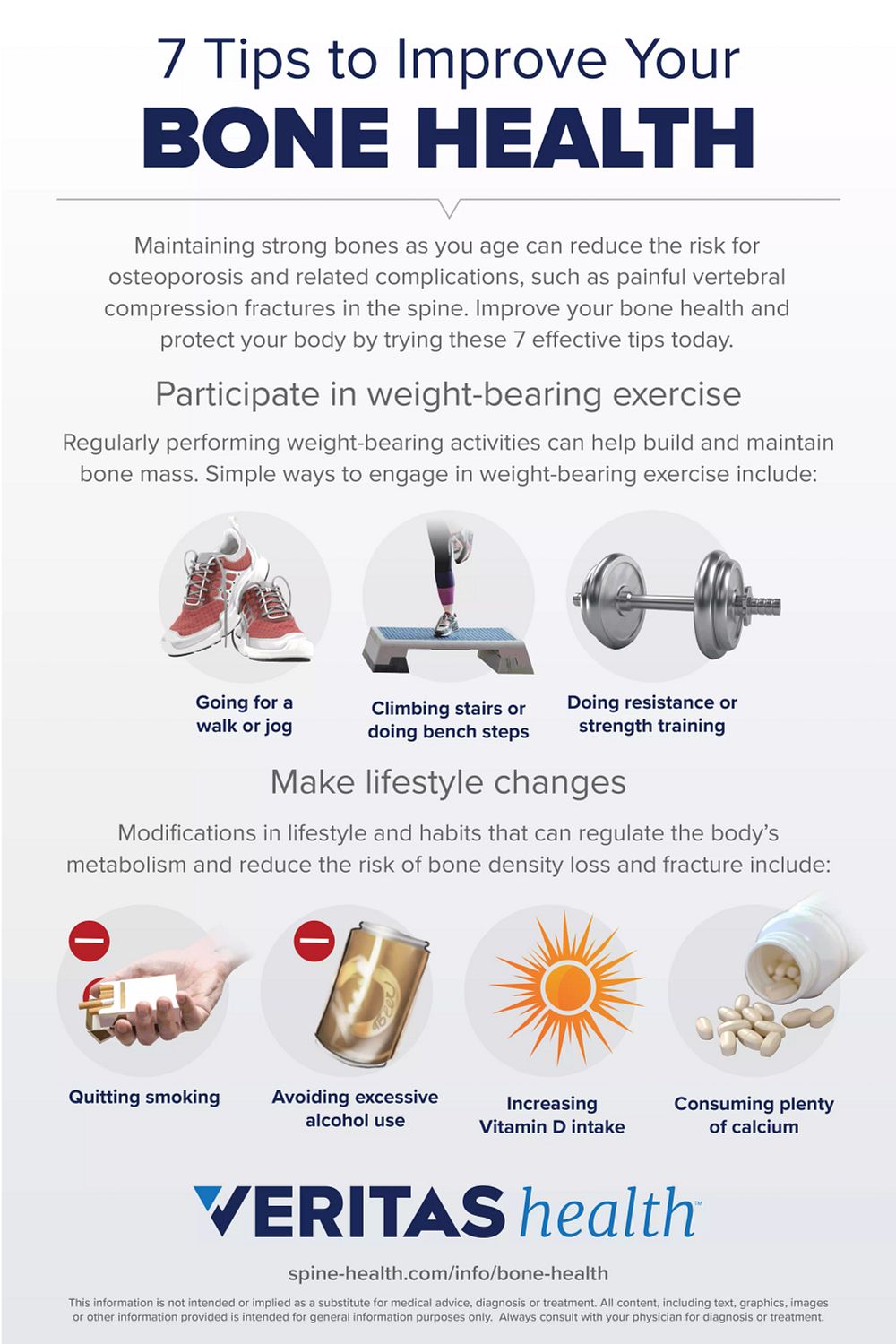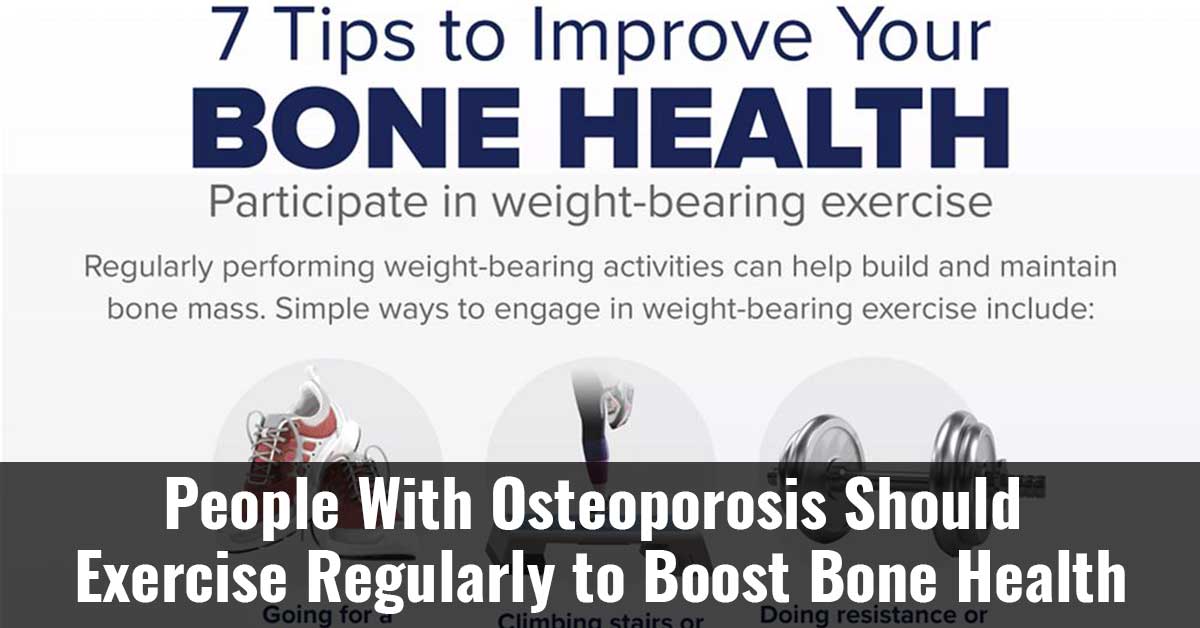According to a consensus statement written by an expert panel, individuals with osteoporosis shouldn’t be avoiding regular exercise.1✅ JOURNAL REFERENCE
DOI: 10.1136/bjsports-2021-104634
They should be encouraged to exercise more as opposed to less, with muscle strengthening exercises included on 2 to 3 days of the week and short bursts of moderate impact activities, which include Zumba, aerobics, or jogging on most days.
And those individuals who have already suffered a vertebral fracture, or who’re elderly or frail, it’s advised to include lower impact exercise up to brisk walking level for 20 minutes daily.
Spine and hip fractures can hamper independence and life expectancy can be reduced, whereas vertebral fractures are linked to long-term pain.
Exercising regularly improves posture, reduces the risk of falls and fractures, strengthens bones, as well as boosts general physical and mental health, so it’s important that individuals with osteoporosis don’t lose out on these health benefits.
But concerns regarding what kind of physical activity individuals with, or at risk of, osteoporosis can safely perform, especially later in life or when bones have already weakened significantly, have deterred individuals with osteoporosis from engaging in physical activity regularly for fear of worsening the condition or experiencing a fracture.
To help resolve any confusion, the existing evidence was reviewed by a multidisciplinary expert panel that drew on an extensive array of expert clinical and patient opinions, to get to an agreement on a selection of recommendations intended to maximize the bone health of individuals with osteoporosis while minimizing their fracture risk.
Important recommendations included are:
- Impact exercise and progressive resistance training that involve major muscle groups for maximizing the strength of the bones
- Resistance training that preferably makes use of resistance weights or machines, gradually building up to heavy loads with the maximum that can be lifted for 8 to 12 repetitions. If this isn’t an option, rowing; circuit training; yoga or Pilates; sit to stands; stair climbing; gardening, heavy housework, and DIY could be good alternatives for strengthening muscles
- Impact exercise examples are Zumba, Scottish dancing, aerobics, jumping, running, and many ball games
- Balance and strength improving activities to reduce the risk of falls, such as yoga, Pilates, and Tai chi; referral to recognized programs for preventing falls
- Spinal extension exercises for improving posture and potentially reducing the risk of vertebral fractures and falls
- Avoiding postures that involve a high degree of bending the spine forwards, which include picking up heavy objects, curl-ups, or toe touches without bending at the hips and knees
- For individuals with prior fractures, including of the vertebrae, or who’re elderly or frail, exercise only up to an impact equal to brisk walking
- For individuals at risk of falls, begin with targeted strength and balance training
- Breathing and pelvic floor exercises can help with the easing of symptoms that could be aggravated by severe curvature of the spine
The consensus proceeds to declare that exercise could help with pain reduction in individuals who have vertebral fractures, as well as improve mobility and quality of life. It should ideally be accompanied by physiotherapist guidance to make sure posture is correct and help promote a return to normal activities.
Exercise and physical activity play an important part in the promotion of bone strength, reducing the risk of falls, and vertebral fracture symptom management so should be part of a wide approach that includes other lifestyle changes such as adequate intake of vitamin D and calcium, no smoking, and reducing intake of alcohol.
Individuals who have osteoporosis need to be encouraged to engage more in physical activities as opposed to less. The evidence indicates that exercise and physical activity isn’t linked to significant harm, which includes vertebral fracture; the physical activity benefits generally outweigh the risks.
Although specific kinds of exercise could be the most effective, even a minimal activity level should provide some benefit. Health professionals should avoid exercise or physical activity restriction based on fracture thresholds or bone mineral density as this may deter individuals from exercising. Individuals who have painful vertebral fractures need prompt and clear guidance on how to adapt movements involved in everyday living.

Image Source – spine-health



